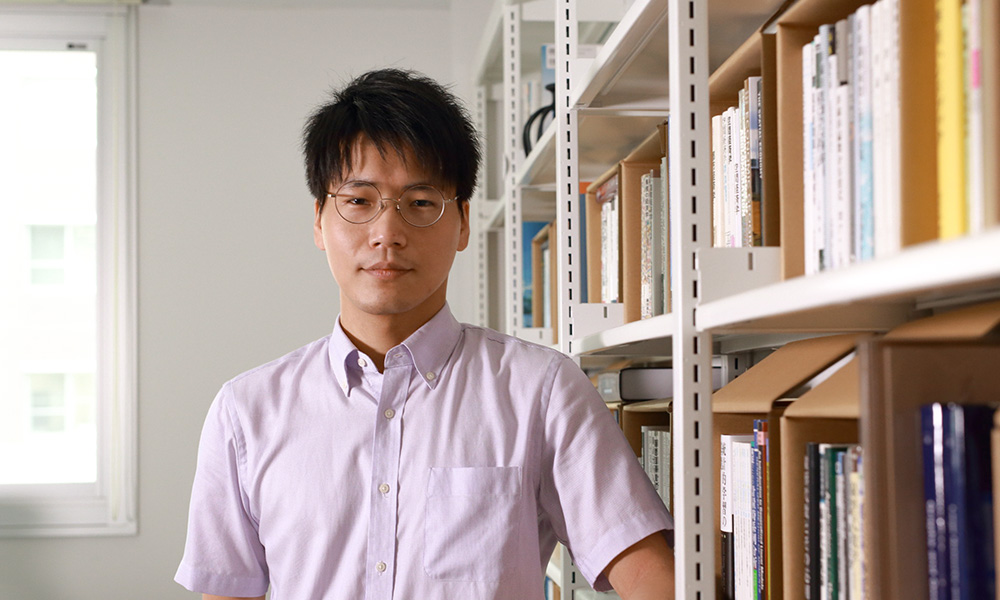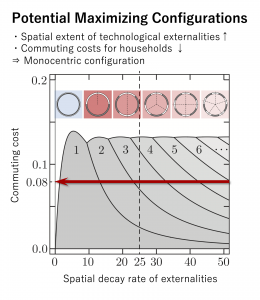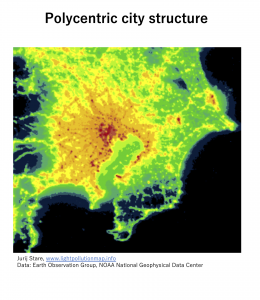
About my research
I work in the fields of microeconomic theory and game theory, with an emphasis on how these tools can be employed to provide good a understanding of the spatial organizations of human activities. Spatial economic phenomena such as urbanization in a country or land use patterns in cities can be seen as collective outcomes arising from a myriad of decisions of small agents. Hence, microeconomic theory and game theory, in particular the theory of population games and evolutionary dynamics, provides a natural and effective method of analysis.
Selected publications
Osawa, M., & Akamatsu, T. (2020). Equilibrium refinement for a model of non-monocentric internal structures of cities: A potential game approach. Journal of Economic Theory, 187, 105025.


Using the theory of potential games, this paper addresses the emergence of polycentric structures in cities that result from trade-offs between agglomeration economies and congestion effects. We consider a model that explains the formation of multiple business centers in cities as an equilibrium outcome under the presence of households’ commuting costs and positive technological externalities between firms. We show that the model is a large-population (non-atomic) potential game. To elucidate properties of stable spatial equilibria in the model, we consider local and global maximizations of the potential function, which are known to correspond to various equilibrium refinement criteria. We find that (i) the formation of business centers (agglomeration of firms) is possible only when households’ commuting costs are sufficiently low and that (ii) the size (number) of business centers increases (decreases) monotonically as communication between firms becomes easier.
Osawa, M., Fu, H., & Akamatsu, T. (2018). First-best dynamic assignment of commuters with endogenous heterogeneities in a corridor network. Transportation Research Part B: Methodological, 117, 811-831.
Osawa, M., Akamatsu, T., & Takayama, Y. (2017). Harris And Wilson (1978) Model Revisited: The spatial period-doubling cascade in an urban retail model. Journal of Regional Science, 57(3), 442-466.